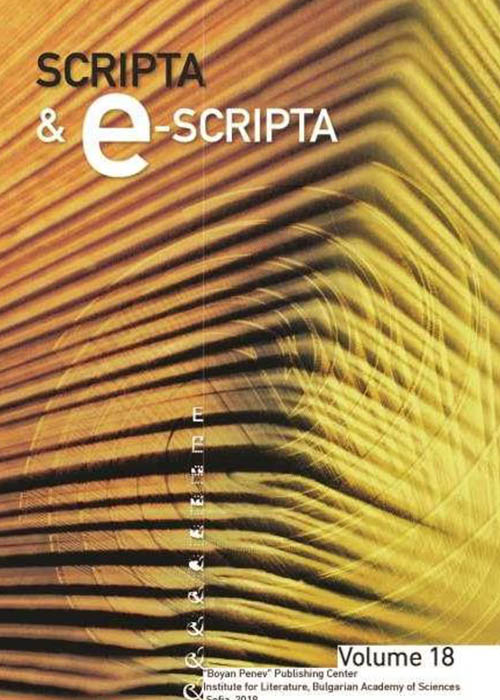The Miracle of St Nicholas and the Three Generals in the Bojana Church (1259) – Miracle of Emperor Constantine the Great’s Dream

- Author(s): Silvia Neicheva
- Subject(s): Language and Literature Studies //
-
Published by: Institute for Literature BAS

- Print ISSN: 1312-238X
- Summary/Abstract:
The Bojana Church of St Nicholas and St Panteleemon of 1259 is a comparatively well-preserved monument of Bulgarian mediaeval art which has attracted the interest of a number of experts from various disciplines in the arts and humanities above all with the portraits of two lay couples depicted in the narthex: of the Bulgarian Tsar Constantine Tich Asen (1257-1277) and his wife Irene, and of the donors (ktetors), Sebastocrator Kalojan and his wife Desislava. The experience of a number of Bulgarian scientists from the last century to seek a hint of fate donors of the Boyana Church in images of Miracle of St. Nicholas with three generals (one third of all or six of the 18 scenes), provoked the author of the article to draw a parallel with similar Byzantine monuments of the 11th-15th c. There is a preference to present the Miracle in several scenes in all of them - iconography of constituent scenes remains unsolved up to now in essence and variation in individual interpretations is depending on the selected number of stages and the order of their presentation. The choice of the first scene, the sequence in producing of six episodes, the shifted center of events compared to the Life of the saint and the overall context in which the story is showed in frescoes in the narthex warrants to determine the miracle with the three generals in the Boyana Church in parrallel with the Miracle with the dream of the Emperor Constantine the Great. Consequences of a new interpretation made there of one of the miracles of St. Nicholas is the realization that interpretation of the mural of The Miracle of St. Nicholas with three generals in the Boyana Church from 1259 should be viewed not only as a component of the total cycle about the saint in the narthex, but the illustration that corresponds to the religious motives of the founders of the temple Kaloyan and Desislava. The approach applied here – examining the wall paintings in the Bojana Church as a “text”, as a “narrative” that expects to be “deciphered” – shows the need for a more detailed study of the figure of the author of the iconographic program who has turned, with great skill and erudition, the visual interpretation of the hagiographical narrative of St. Nicholas into one of the merits of the monument in Bojana of 1259.
Journal: Scripta & e-Scripta vol. 12, 2013
-
Page Range: 227-250
No. of Pages: 24
Language: English - LINK CEEOL: https://www.ceeol.com/search/article-detail?id=17987
-
SUBJECT: Language and Literature Studies //KEYWORDS:
-